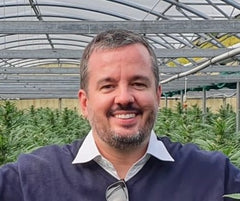The Historical Roots of Hemp in Japan
The cultivation of hemp in Japan has a rich and intricate history, stretching back over 10,000 years. This crop was not only a cornerstone of agricultural practice but also a significant cultural element. During the Edo period, hemp was extensively used for food, while its fibers were integral in creating garments for the imperial family and Shinto priests. Feudal lords and wealthy merchants promoted its growth, recognizing its value for producing high-quality textiles. Intriguingly, hemp cultivation even influenced the training of ninja apprentices, who practiced leaping over rapidly growing hemp plants. However, post-World War II brought stringent regulations, culminating in the 1948 Cannabis Control Act, which severely limited hemp farming, marking a decline in this once-flourishing industry.
Modern Challenges and Decline
In recent years, the number of hemp cultivators in Japan has drastically reduced. The Tochigi Prefecture, once a hemp cultivation powerhouse, now has a mere handful of farmers, many of whom are aging. This decline poses a significant risk to the survival of this traditional industry. Factors such as stringent laws, the high cost of cultivation, and the rise of synthetic fibers have further contributed to the diminishing presence of hemp in Japan's agricultural landscape.
Efforts to Revitalize the Industry
In response to these challenges, dedicated individuals and organizations are spearheading initiatives to revive Japan's hemp industry. Yoshinori Omori, a cultivator with family roots in hemp farming dating back to the Edo period, is at the forefront of these efforts. Omori's farm, spanning four hectares, accounts for over half of Japan's current hemp production. He is actively developing new hemp products, aiming to attract younger generations and diversify the industry's applications.
The Hokkaido Industrial Hemp Association's Campaign
Another pivotal force in this revival is the Hokkaido Industrial Hemp Association (HIHA). Under the leadership of Dr. Harumi Kikuchi, HIHA has launched a comprehensive campaign to reintroduce hemp to Japan. Their ambitious plan includes planting 20,000 hectares of hemp in Hokkaido and enhancing domestic distribution through increased imports. This initiative also involves collaboration with international stakeholders, demonstrating a global outlook towards hemp's potential.
International Collaboration and Innovation
The ASACON international conference, organized by HIHA, represents a major step in this revival effort. This gathering, held in Hokkaido's historic hemp-growing regions, brings together experts from Japan, the USA, France, Germany, and other countries to explore hemp's diverse potential. This conference underscores the global interest in Japan's hemp industry and its role in the international market, particularly in sectors like health products, cosmetics, and foods.
Preserving Tradition While Embracing the Future
Amid these revitalization efforts, preserving the historical significance of hemp in Japan remains crucial. Hemp has been an integral part of Japanese culture, evident in its use in Shinto rituals and sumo wrestling traditions. By blending this rich heritage with innovative approaches, Japan's hemp industry stands at a crossroads, poised to reclaim its historical significance while adapting to contemporary demands.







